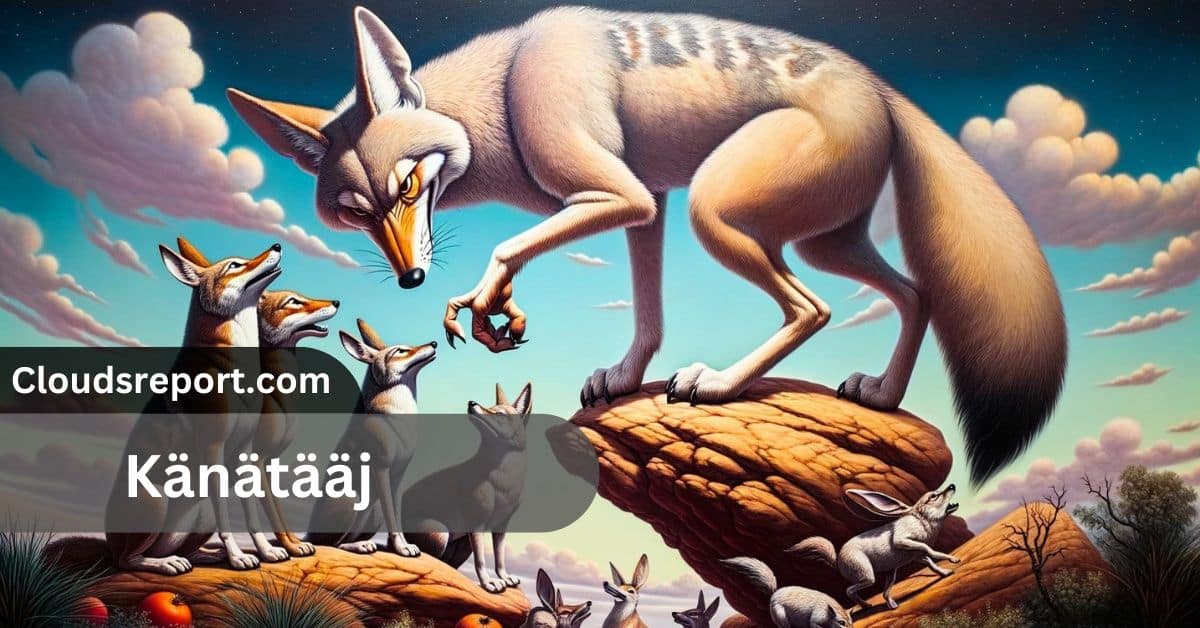Känätääj – The Secrets Of This Northern European Myth!
Känätääj is a fascinating character from Northern European myths, known for changing shape and being both a trickster and a protector. Found in Scandinavian and Baltic stories, Känätääj represents nature’s ability to adapt and find balance.
This article delves into the origins, characteristics, cultural significance, and modern interpretations of Känätääj, providing a comprehensive exploration that aims to surpass existing sources and rank highly in search engine results.
The Origins of Känätääj – The Story Behind the Legend!
The Mythical Beginnings:
Känätääj originates from the folklore of Northern Europe, particularly within the Scandinavian and Baltic regions. Rooted in ancient traditions and oral storytelling, Känätääj has been depicted in various forms over centuries.
This figure is often portrayed as a shape-shifter, a trait that symbolizes its connection to the natural world and its ability to adapt to different situations.
Historical Context:
Understanding the historical context of Känätääj requires an exploration of Northern European mythologies. The figure’s shape-shifting abilities and dual nature reflect the region’s rich folklore, which often includes spirits and deities that embody both benevolent and malevolent traits.
Känätääj’s role as a protector and trickster aligns with the broader themes of balance and harmony in these ancient stories.
The Top Characteristics of Känätääj Explained:
Shape-Shifting Abilities:
One of the most distinctive features of Känätääj is its shape-shifting ability. This spirit can transform into various forms, including:
- Sprite-like Figures: These forms are often small, ethereal beings associated with nature and magic.
- Majestic Animals: Känätääj may take the shape of animals such as deer and owls, which symbolize wisdom, grace, and the mysterious aspects of the natural world.
The ability to change forms highlights Känätääj’s versatility and adaptability, allowing it to navigate different environments and situations with ease.
What Are Some Lesser-Known Forms Känätääj Can Take?
Känätääj can change into more than just animals and small magical beings. Some lesser-known forms include natural elements like mist or shadows. These shapes help Känätääj blend into its surroundings almost invisibly, allowing it to quietly influence events or observe people without being noticed. This ability to become part of nature adds to its mysterious and versatile nature, making it a more elusive and intriguing figure in folklore.
Dual Nature of Känätääj – Trickster and Protector!
Känätääj embodies both trickster and protector roles, reflecting a balance between mischief and guardianship. As a trickster, Känätääj engages in playful deception and challenges, often testing the wit and resourcefulness of those it encounters. This aspect of its personality serves to remind people of the importance of cleverness and adaptability.
In contrast, Känätääj’s role as a protector involves safeguarding individuals and communities from harm. This protective nature emphasizes the spirit’s connection to the natural world and its ability to influence events for the greater good.
The Cultural Significance of Känätääj – Why It Matters!
Folklore and Legends:
Känätääj appears in numerous folklore tales and legends throughout Northern Europe. These stories often highlight the spirit’s interactions with humans, showcasing its shape-shifting abilities and its impact on various situations.
The legends serve as a means of passing down cultural values and lessons, with Känätääj embodying the themes of balance, adaptability, and respect for nature.
Symbolism and Interpretation:
The symbolism associated with Känätääj is deeply rooted in the natural world. Its shape-shifting abilities represent the fluidity and adaptability of nature, while its dual nature as a trickster and protector underscores the importance of balance and harmony.
Känätääj’s presence in folklore serves as a reminder of the interconnectedness between humans and the natural world.
How Does Känätääj’s Shape-Shifting Affect Its Interactions With Humans?
Känätääj’s shape-shifting allows it to blend into different environments and situations. This adaptability makes it a versatile figure in folklore, capable of influencing events in various ways. By changing forms, Känätääj can approach humans in different guises, often testing their character or providing assistance in unexpected ways.
Modern Interpretations of Känätääj – New Takes on the Legend!
Influence on Contemporary Culture:
In recent years, Känätääj has found its way into contemporary culture through various forms of media, including literature, art, and digital platforms. Modern interpretations often explore the spirit’s shape-shifting abilities and dual nature, offering fresh perspectives on its role in folklore.
Digital Representations:
Känätääj has also been adapted into digital formats, including video games and virtual experiences. These modern representations often emphasize the spirit’s versatility and adaptability, allowing users to interact with Känätääj in innovative ways.
These digital adaptations contribute to the ongoing evolution of Känätääj’s mythos and its relevance in contemporary culture.
How Does Känätääj’s Trickster Role Impact Local Folklore Traditions?
Känätääj’s trickster role often involves creating elaborate puzzles or challenges that reflect local values and customs. Through these challenges, Känätääj encourages individuals to engage in clever problem-solving and critical thinking, reinforcing cultural lessons about wisdom and humility.
Känätääj in Popular Media – From Folklore to Screen!
Literature and Art
Känätääj has inspired various works of literature and art, reflecting its continued influence on creative expression. These works often explore the spirit’s shape-shifting abilities and its role as a trickster and protector. Through these artistic interpretations, Känätääj remains a vibrant and relevant figure in modern storytelling.
Video Games and Virtual Experiences
The digital age has brought Känätääj into new realms through video games and virtual experiences. These modern representations often highlight the spirit’s adaptability and versatility, allowing players to engage with Känätääj in interactive ways. These digital adaptations showcase the ongoing relevance of Känätääj and its impact on contemporary culture.
Explore The Insights And Analysis Behind Känätääj:
The Enduring Appeal of Känätääj:
Känätääj’s enduring appeal can be attributed to its multifaceted nature and its deep connection to the natural world. The spirit’s shape-shifting abilities and dual roles as a trickster and protector offer a rich tapestry of symbolism and meaning.
This complexity allows Känätääj to resonate with audiences across different cultures and time periods.
The Role of Shape-Shifting in Folklore:
Shape-shifting is a common theme in folklore, representing the fluidity and adaptability of the natural world. Känätääj’s shape-shifting abilities highlight the importance of flexibility and adaptability in navigating different situations.
This theme reflects broader cultural values and beliefs about the interconnectedness between humans and nature.
Känätääj’s Influence on Modern Culture:
Känätääj’s influence extends beyond traditional folklore, with modern adaptations exploring its role in contemporary culture. These digital and artistic representations offer new perspectives on the spirit’s characteristics and significance, contributing to its ongoing relevance in the digital age.
Are There Specific Legends Or Stories About Känätääj?
Yes, Känätääj appears in various legends where it plays different roles depending on the story. In some tales, Känätääj uses its shape-shifting abilities to outwit humans, teaching lessons about humility and wisdom. In others, it assumes a protective role, intervening to help individuals in times of need or danger.
What Lessons Can Be Learned From Känätääj’s Stories?
Stories about Känätääj often impart lessons about the importance of adaptability, balance, and respect for nature. By navigating challenges and protecting communities, Känätääj teaches the value of resilience and the need for harmony between humans and the natural world, reflecting broader philosophical themes found in Northern European folklore.
How Has The Depiction Of Känätääj Evolved Over Time?
Over time, Känätääj’s depiction has evolved from primarily oral storytelling to include modern visual and digital media. Early representations in folklore emphasized its role as a mystical guide and guardian, while contemporary portrayals often highlight its adaptability and versatility in more diverse and interactive formats.
FAQs:
1. What is Känätääj?
Känätääj is a figure from Northern European folklore known for its shape-shifting abilities and dual roles as a trickster and protector. It is often depicted as a sprite-like figure or majestic animals such as deer and owls.
2. What does Känätääj symbolize?
Känätääj symbolizes the versatility and fluidity of nature. Its shape-shifting abilities represent adaptability, while its roles as a trickster and protector emphasize the importance of balance and harmony.
3. How does Känätääj interact with humans in folklore?
In folklore, Känätääj interacts with humans through playful deception and protective actions. As a trickster, it challenges individuals and tests their wit, while as a protector, it safeguards people and communities from harm.
4. How has Känätääj been represented in modern media?
Känätääj has been represented in various forms of modern media, including literature, art, video games, and virtual experiences. These representations often highlight its shape-shifting abilities and dual nature.
5. What is the significance of shape-shifting in Känätääj’s mythology?
Shape-shifting in Känätääj’s mythology represents the fluidity and adaptability of nature. It reflects the spirit’s ability to navigate different situations and environments, symbolizing flexibility and resilience.
6. How does Känätääj’s role as a trickster and protector impact its cultural significance?
Känätääj’s dual roles as a trickster and protector highlight the importance of balance and harmony in folklore. The trickster aspect emphasizes cleverness and adaptability, while the protective role underscores the spirit’s connection to the natural world and its influence on the greater good.
Conclusion:
Känätääj is a complex and fascinating figure in Northern European folklore, embodying the dual roles of trickster and protector through its shape-shifting abilities. Its rich symbolism and cultural significance make it a compelling subject for exploration and interpretation.
By understanding Känätääj’s origins, characteristics, and modern adaptations, we gain insight into the enduring appeal of this enigmatic spirit and its impact on contemporary culture.






